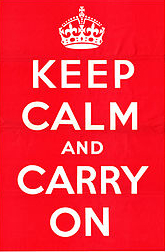
This is about the ‘Thear-tah’, as some might call it.
But it’s not a hoity-toity take on culture, it’s more about the trial stage actors undergo to learn their lines.
Hard stuff, at times.
You wouldn’t be the first to wonder how they can master lengthy scripts that can play out for some two and a half hours or more.
How do they manage it with the right timing, inflection and convincing persona?
Actors must be superhuman in the recall department.
Maybe they should be supplementing their incomes by counting cards in Las Vegas.
One actor, Lord Olivier, was superhuman. Learning lines was no problem for him.
He’d be the God-sent witness for some lucky cop after a bank robbery.
Olivier would know the license number of the get-away car and be able to detail the clothing and facial characteristics of the villains down to a mole on the driver’s left cheek.
But that’s only one actor. The rest? Maybe not so much.
All this came by way of an actor who knows about the right and wrong ways of learning lines.
She admits to trying every way possible.
One way is to find your lines the moment you discover a script has been sent to you in the mail.
As you intently search the pages your fingers work independently of that to somehow find a yellow highlighter.
Singling out your role makes reams of dialogue seem less forbidding.
Or does it?
Try it yourself. Try getting some sort of hold on this speech by Hamlet.
O, it offends me to the soul to hear a robustious periwig-pated
fellow tear a passion to tatters, to very rags, to split the
ears of the groundlings, who for the most part are capable of nothing
but inexplicable dumbshows and noise: I would have
such a fellow whipped for o’erdoing Termagant; it
out-herods Herod: pray you, avoid it.
Without taking a wider view of Shakespeare’s play … without knowing that here Hamlet is in the guise of a theatre director coaching actors ‘how to perform’, learning this short piece isn’t simple.
According to more than a few actors, a better way to learn lines is to actually read the play a few times to get the sense of it all. It’s called context.
Get interested in all the roles, how the play is constructed, understand the sequence of events, the foreshadowing, the twists, the characters’ motivations, the entrances, exits, blocking and notes on production design.
See your lines as part of a greater whole. A wider view can help.
Your approach benefits from absorbing the personality, temperament and disposition of a character rather than a one-dimensional need to commit dialogue to memory.
Advertising agencies might want to take a leaf from this all-inclusive thinking.
Too many of them automatically reach for the yellow highlighter to underscore their roles when hired.
Some just want to focus on ‘their part’. Have you noticed?
They’re happy to do the email blast campaign, put together an idea for an ‘experiential’ project, crank out a video for YouTube, do an online ad or focus on an SEO project.
They want to do what they know and what they’ve been comfortable doing.
It’s a bit one-sided, this, and it doesn’t always make for the best work.
It’s not unlike an actor learning his or her part independently of the whole production.
Perform this way as an agency and you invite clients to view you merely as a vendor. A supplier who will always remain outside the trust of a true partner.
How can you do your best work if you’re consigned to the shadows?
The thing is, advertising isn’t brain surgery. But business can be.
It takes a lot of study, knowledge and experience.
It could pay agencies to start from that point of view.
Especially if they can buckle down to absorb more about their clients’ businesses.
That’s bound to lead to better work and a role that’s anything but a walk-on part.
Share with us. Marketers, what does it take for your agency to properly understand your business? Are there any tips for building the agency/client relationship? Thanks for reading. Regards, Steve Ulin



